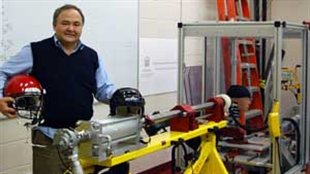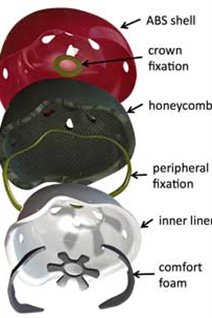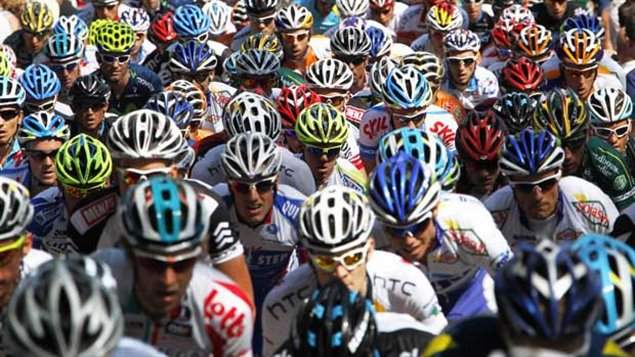Scientists and brain specialists say its time to improve bike helmet designs.

many experts saying it’s time current bike helmet
standards measured rotational acceleration,
with the goal of reducing the risk of concussion.
© CBC
Current helmets are intended to prevent skull fractures, lacerations and some bruising of the brain.
However, since the helmets originally came into popular use, our understanding of concussions has increased greatly while helmet standards have remained more or less as they were in 1999.
Neurosurgeon Charles Tator says when a cyclist falls and their head hits the pavement or other object, the head and brain undergo linear acceleration, ie they keep moving in the direction of the impact. Bicycle helmets can mitigate the risk of skull fracture.
However at impact the brain may also undergo rotational or angular rotation. Dr Tator says that new understanding shows that concussion is more related to this second phenomenon.
He agrees with University of Ottawa kinesiologist Blaine Hoshizaki who says that, “Bicycle helmets are not really providing a great deal of protection, if at all, in regards to concussions.”
Different helmet designs are in the works, but would likely cost more.

confident we are on the cusp of helmet designs that
will mitigate concussive injuries.
© courtesy University of Ottawa
In Professor Hoshizaki’s lab, his team has developed systems that substantially decrease rotational acceleration. However, the lab isn’t about helmet design, it “focuses more on reconstruction and understanding the mechanism of injury.”
Understanding the mechanism of head injuries in sport is the focus of Hoshizaki’s research. He chairs the ice hockey equipment committee of the International Organization for Standardization and also sits on Canadian, American and European standards committees for sports equipment.
He notes that manufacturers don’t have a lot of incentive to develop better helmets as they would cost more and have to compete with current lower cost products.
To overcome this would require new standards to be developed. Helmets sold in the US have to meet the Consumer Product Safety Commission (CPSA) mandatory standard which remains unchanged since 1999.

The helmet’s layers in the angular
impact mitigation (AIM) system show
the elastically suspended aluminum
honeycomb liner that is supposed to
absorb both linear and angular
acceleration in order to reduce the
risk of brain injury. © courtesy Legacy
Biomechanics Laboratory
Canada currently does not have a mandatory standard. A different standard was developed by the Canadian Standards Association (CSA) but because of free trade, the current US standard is used by manufacturers for all of North America.
Some new designs are coming on to the market. This includes a Swedish design called MIPS, an acronym for Multi-directional Impact Protection System. It uses an inner liner attached to the outer shell with a pin that allows some slight rotation to absorb some of the rotational energy.
Another design from the US employs a similar inner-outer shell concept elastically separated to absorb both linear acceleration in direct impacts, and angular acceleration in oblique impacts. A study of the design claimed the Angular Impact Mitigation (AIM) system reduced peak angular acceleration by 34 per cent, and predict a 27 per cent reduction in the risk of concussion. However a co-author of the study said, more research is required.
(with files from CBC)







For reasons beyond our control, and for an undetermined period of time, our comment section is now closed. However, our social networks remain open to your contributions.